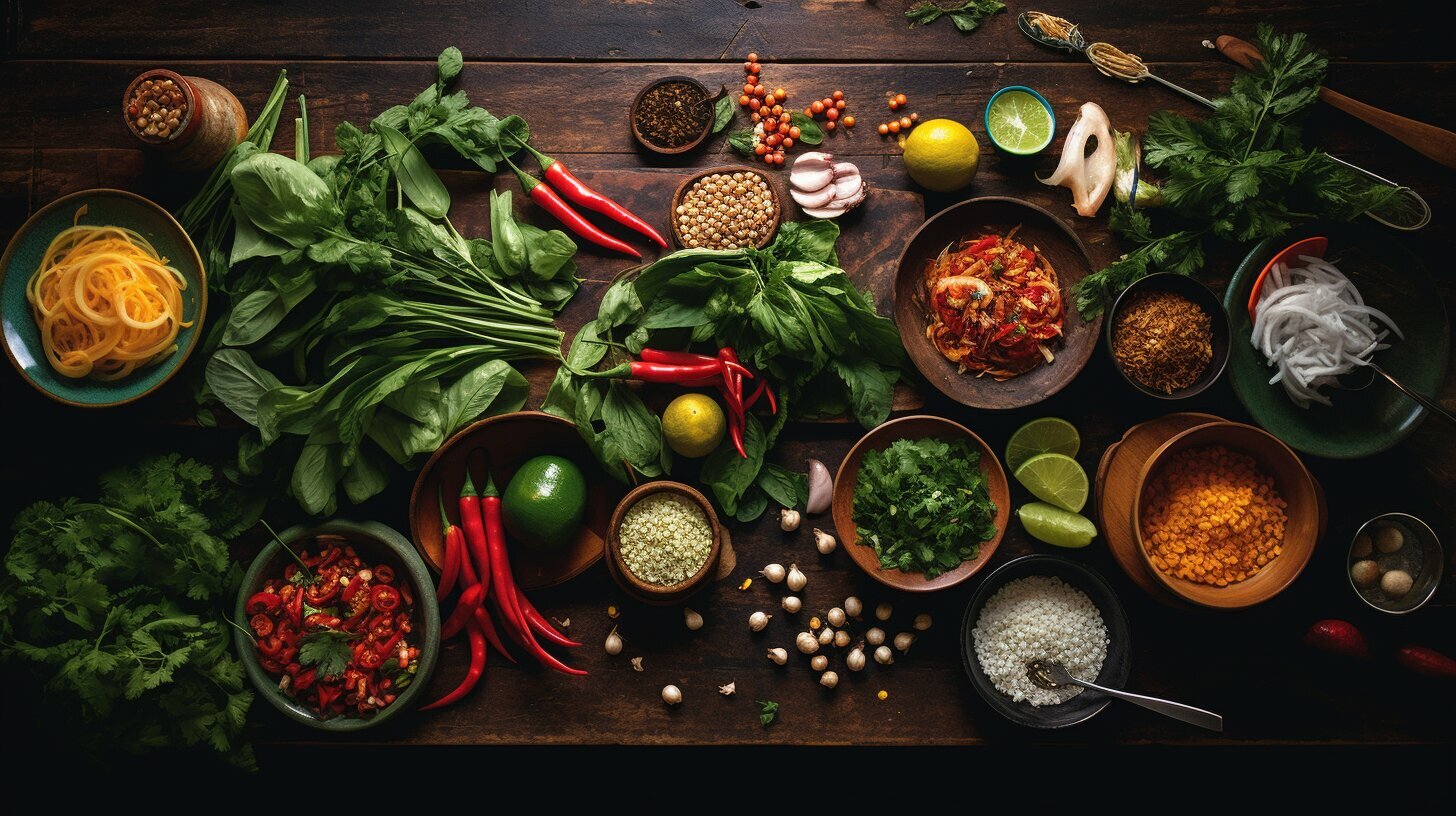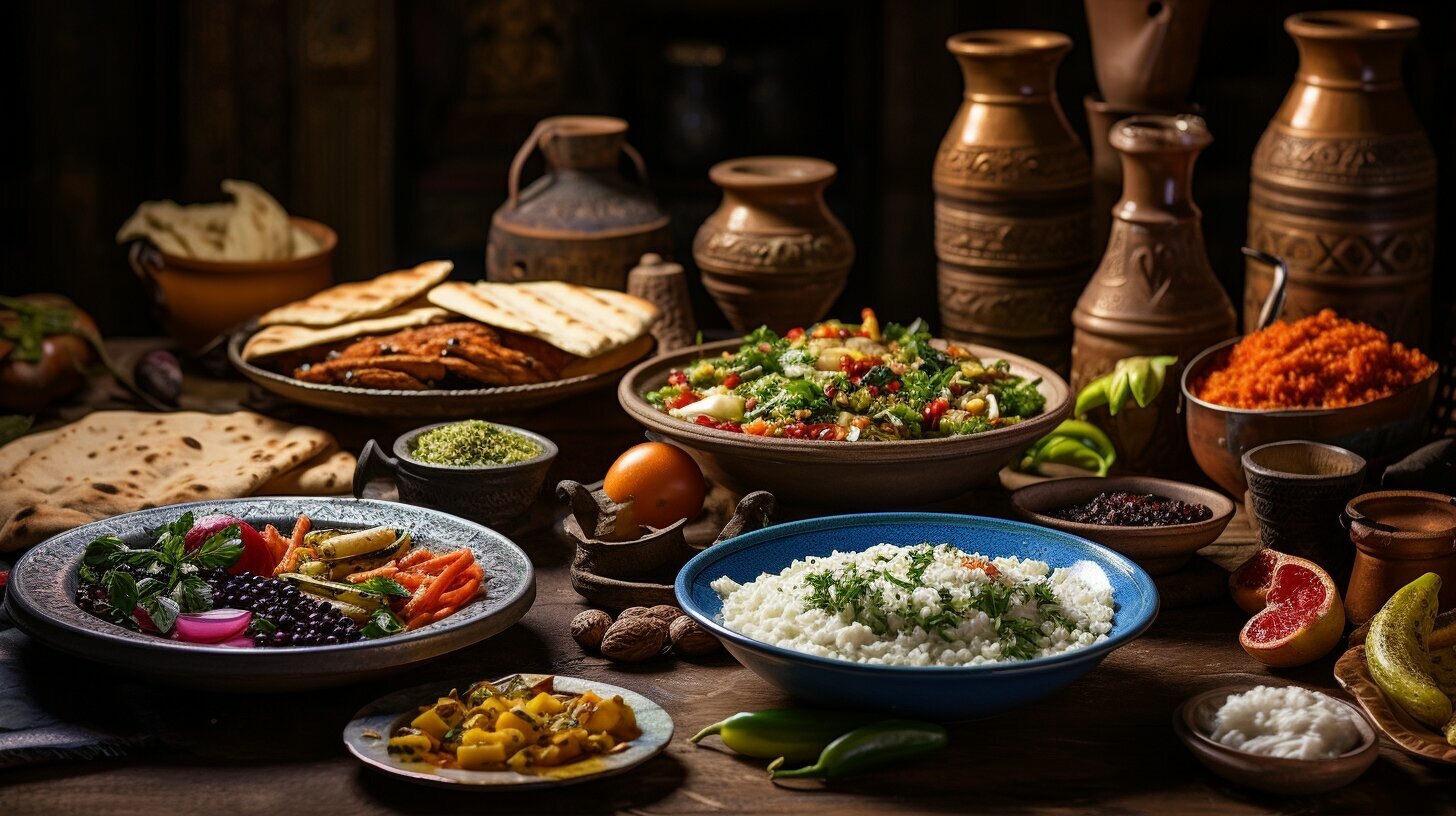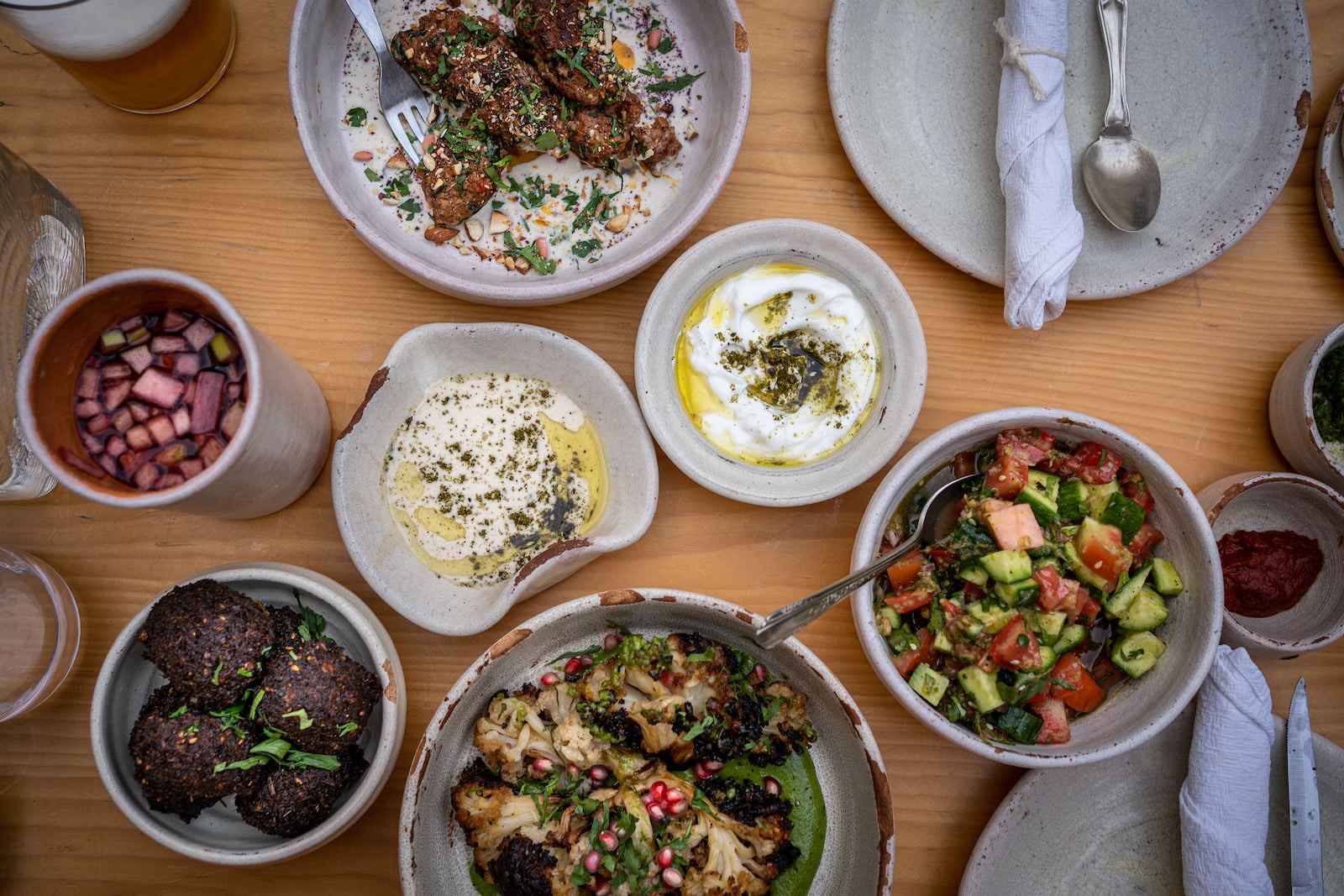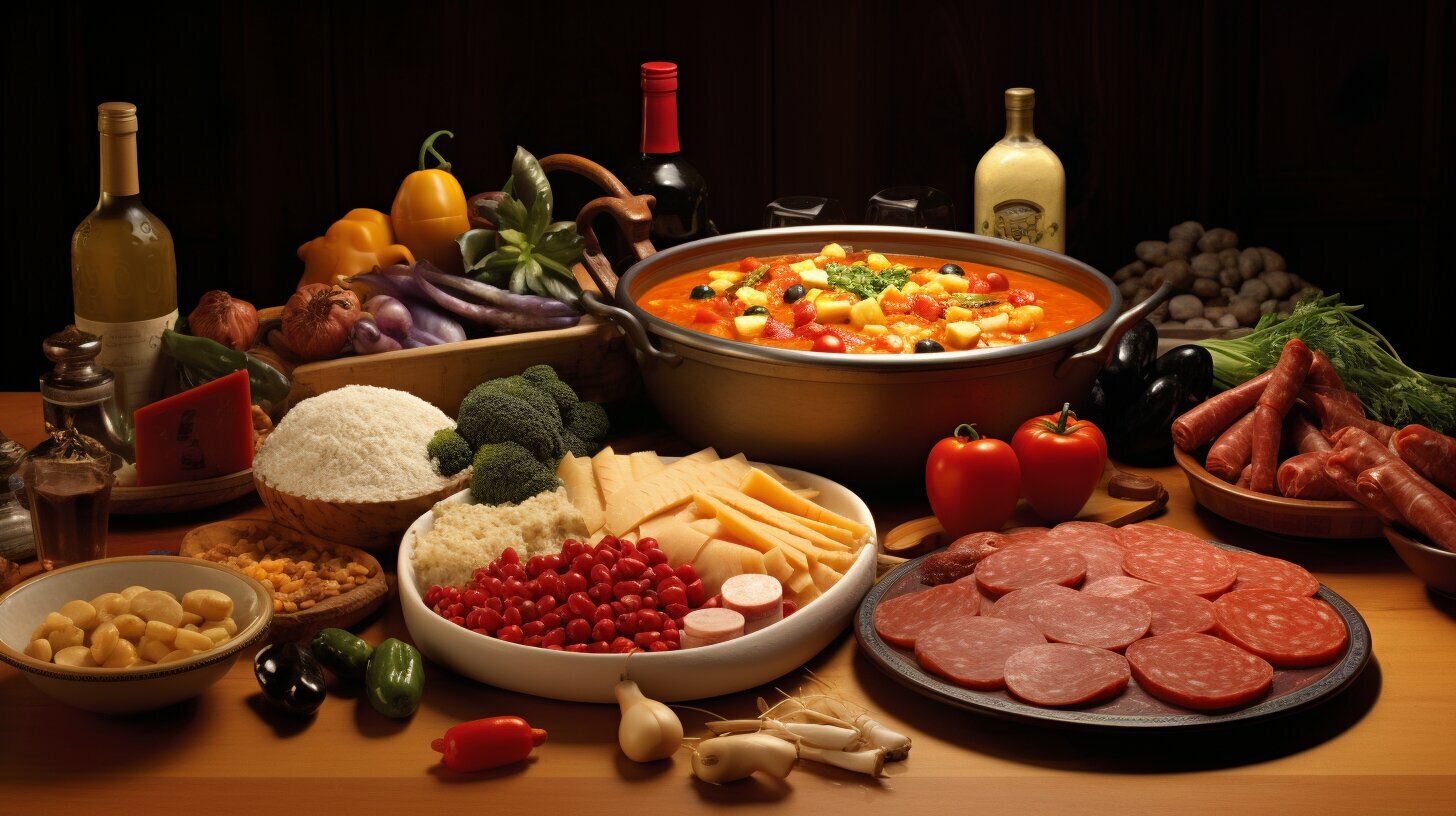When it comes to Southeast Asian cuisine, Thai food and Vietnamese food are two of the most popular culinary traditions in the region. While both of these cuisines share some similarities, they also have distinct differences that set them apart. In this article, we will take a closer look at how Thai food differs from Vietnamese food, highlighting the key characteristics of each cuisine, the ingredients used, and the unique cooking methods employed.
Key Takeaways
- Thai and Vietnamese food have distinct differences in ingredients, cooking methods, and flavor profiles.
- Thai cuisine emphasizes the use of aromatic ingredients and a balance of sweet, sour, spicy, and salty flavors, while Vietnamese cuisine focuses on fresh ingredients and delicate flavors.
- The cultural influences in Thai and Vietnamese cuisine shape the culinary traditions of each country.
Thai Food Characteristics
Thai cuisine is known for its bold and aromatic flavors that tantalize taste buds and leave an unforgettable impression. Here are some of the key characteristics that define Thai food:
- Spicy: Thai cuisine is often associated with spiciness, thanks to the use of chilies that add heat to dishes like Tom Yum soup and Pad Thai noodles.
- Sweet: Despite the spiciness, Thai food also boasts a variety of sweet flavors, often achieved by adding palm sugar, coconut milk or fruits like mango and pineapple.
- Sour: Sourness is another crucial element in Thai cuisine, often achieved using lime juice or tamarind paste to balance out the heat and sweetness.
- Salty: Salt is used generously in Thai cooking, often in the form of fish sauce or soy sauce to add depth of flavor to dishes.
- Aromatic: Thai cuisine is famous for its use of herbs and spices like lemongrass, kaffir lime leaves, and galangal, which offer a fresh and invigorating aroma to dishes.
The combination of spicy, sweet, sour, and salty flavors creates a harmonious balance on the palate, making Thai cuisine a delicious and unique culinary experience.
Vietnamese Food Characteristics
Vietnamese cuisine is characterized by its fresh, healthy, and flavorful dishes. The use of herbs and vegetables like mint, cilantro, and bean sprouts give Vietnamese food a distinctive taste and aroma that sets it apart from other Asian cuisines.
The focus on fresh ingredients is reflected in many Vietnamese dishes like pho, a traditional noodle soup made with beef or chicken broth, rice noodles, and various herbs and spices. Another classic Vietnamese dish is banh mi, a sandwich filled with pickled vegetables, meat, and fresh herbs, like cilantro and Thai basil. The simplicity of these dishes highlights the importance of highlighting the natural flavors of each ingredient.
French colonialism also had a significant influence on Vietnamese cuisine, with dishes like banh mi and coffee being direct French adaptations. Overall, Vietnamese food is known for its light and delicate flavors, balanced seasoning, and healthy ingredients.
Ingredients in Thai and Vietnamese Cuisine
Thai and Vietnamese cuisine are both known for their fresh ingredients, bold flavors, and unique cultural influences. While some ingredients overlap between the two cuisines, there are distinct differences that contribute to the character and taste of each dish.
One of the key differences between Thai and Vietnamese cuisine is the base of the meal. Thai cuisine often centers around rice, while Vietnamese cuisine utilizes rice noodles as a staple ingredient. Additionally, Thai cuisine commonly features ingredients like coconut milk, lemongrass, galangal, and chili peppers, which lend to the cuisine’s spicy and sweet flavors. Vietnamese cuisine, on the other hand, emphasizes fresh herbs like mint and cilantro, as well as the use of fish sauce, which gives dishes a savory yet slightly sweet taste.
The cultural influences on Thai and Vietnamese cuisine also play a significant role in the ingredients used. Vietnamese cuisine has been heavily influenced by Chinese cooking methods and flavors, while also featuring French-style cooking techniques and the use of French ingredients like pâté. In contrast, Thai cuisine displays influences from Indian, Chinese, and Malay cuisine and is known for its bold flavors with the use of ingredients like tamarind, turmeric, and cardamom.
| Thai Cuisine | Vietnamese Cuisine |
|---|---|
| Coconut milk | Fish sauce |
| Lemongrass | Rice noodles |
| Kaffir lime leaves | Mint and cilantro |
| Galangal | Pâté |
Despite the differences in ingredients, both Thai and Vietnamese cuisine rely on the use of fresh, seasonal produce to enhance their unique flavor profiles. From tangy, spicy curries to delicately flavored noodle soups, the ingredients used in Thai and Vietnamese cuisine are a testament to the region’s rich culinary heritage.
Cooking Methods in Thai and Vietnamese Cuisine
Thai and Vietnamese cuisine have different cooking methods that contribute to their unique flavors. Thai cuisine involves stir-frying, grilling, and deep-frying to create dishes with bold, intense flavors. On the other hand, Vietnamese cuisine emphasizes steaming, simmering, and boiling to create lighter, more delicate flavors.
Stir-frying is a popular method in Thai cuisine, allowing chefs to cook ingredients quickly over high heat and retain their crunchiness and flavors. Grilling is also common, especially for meats marinated in fragrant spices and herbs. Deep-frying, while less common, is used to create crispy and flavorful appetizers like spring rolls and fried chicken.
Vietnamese cuisine, on the other hand, uses steaming and simmering to preserve the natural flavors of ingredients. For example, traditional pho is made by simmering beef bones and herbs for hours to create a flavorful base for the soup. Boiling is also used for dishes like hot pot, where diners cook their own ingredients in a communal pot of boiling broth.
Cultural difference in Thai and Vietnamese Cuisine
These different cooking methods reflect cultural differences between Thailand and Vietnam. Thai cuisine is known for its bold and spicy flavors, influenced by neighboring countries like India and China. The use of high heat and frying techniques is also inspired by Thai street food culture, where vendors need to cook food quickly and efficiently.
On the other hand, Vietnamese cuisine is influenced by French and Chinese cooking styles, highlighting the use of fresh ingredients and the emphasis on light, delicate flavors. The focus on steaming and simmering methods also reflects the Vietnamese tradition of healthy eating.
Flavor Profiles in Thai and Vietnamese Cuisine
Thai and Vietnamese cuisines boast distinct and unique flavor profiles that set them apart from each other and from other Asian culinary traditions. Let’s delve into the flavors of these two distinct cuisines.
Thai Cuisine
Thai cuisine is known for its bold and intense flavors, which come from the use of aromatic ingredients and a harmonious balance of spicy, sweet, sour, and salty tastes.
The use of herbs and spices, such as lemongrass, galangal, and kaffir lime leaves, provides a citrusy and fragrant flavor to the dishes. Chili peppers and dried spices, like coriander and cumin, add a spicy kick to curries, soups, and stir-fries. Coconut milk and palm sugar balance the heat and add a subtle sweetness to the dishes.
Thai cuisine also uses fish sauce, a fermented condiment made from anchovies, to provide a salty and umami flavor to dishes like Pad Thai and Tom Yum soup. Lime juice, tamarind paste, and vinegar are used to add a tangy and sour flavor to many Thai dishes.
Vietnamese Cuisine
Vietnamese cuisine, on the other hand, is all about delicate and fresh flavors that highlight the use of herbs and vegetables.
Herbs like mint, cilantro, and basil are used abundantly to provide a fresh and fragrant flavor to dishes like Vietnamese noodle salad and spring rolls. Vegetables like bean sprouts, cucumber, and carrots are also a staple in many Vietnamese dishes.
Vietnamese cuisine uses a lot of dipping sauces, like nuoc cham and hoisin sauce, to add flavor to grilled meats and stir-fries. These sauces provide a balance of sweet, savory, and tangy flavors to the dishes. Vinegar, lime juice, and lemongrass are also commonly used to add a tangy and citrusy flavor to the dishes.
Overall, Thai cuisine is known for its bold and spicy flavor profile, while Vietnamese cuisine is known for its fresh and delicate flavors. Both cuisines use a variety of herbs and spices to add depth to their dishes, with Thai cuisine leaning towards bold and intense flavors and Vietnamese cuisine emphasizing fresh and lighter flavors.
Conclusion
After exploring the unique characteristics of Thai and Vietnamese cuisine, it is clear that these two culinary traditions offer distinct and diverse flavors. From the use of aromatic herbs and spices in Thai cooking to the emphasis on fresh ingredients in Vietnamese dishes, there is much to appreciate and enjoy in both cuisines.
So, how does Thai food differ from Vietnamese food? Ultimately, it comes down to the balance of flavors, the cooking techniques employed, and the cultural influences that shape each cuisine. While Thai food tends to be bold and spicy, Vietnamese dishes showcase more delicate and nuanced flavors.
Whether you prefer the fiery heat of a Thai curry or the light and refreshing taste of a Vietnamese spring roll, there’s no denying that both Thai and Vietnamese food offer something for everyone.
Thai Food vs Vietnamese Food
In conclusion, while both cuisines share some similarities, such as the use of rice and noodles as staple ingredients, there are clear differences between Thai and Vietnamese food. Thai cuisine is known for its bold and spicy flavors, while Vietnamese dishes showcase greater subtlety and freshness.
Regardless of your personal taste preferences, exploring the unique and diverse flavors of these two culinary traditions is always an adventure worth taking.
FAQ
Q: What are the main differences between Thai and Vietnamese cuisine?
A: Thai and Vietnamese cuisines have distinct characteristics that set them apart. Thai food is known for its aromatic flavors, combining spicy, sweet, sour, and salty tastes. On the other hand, Vietnamese food emphasizes freshness and delicate flavors, with influences from Chinese and French cooking styles.
Q: What are some key ingredients used in Thai and Vietnamese dishes?
A: Thai cuisine often includes ingredients like lemongrass, kaffir lime leaves, and galangal, which contribute to its unique flavors. In Vietnamese cuisine, fresh herbs like mint and cilantro are commonly used. Both cuisines also feature staples like rice, noodles, and proteins, with variations in cooking styles and preparations.
Q: What cooking methods are prominent in Thai and Vietnamese cuisine?
A: Thai and Vietnamese cuisines employ a variety of cooking methods. Stir-frying is common in both, but Thai cuisine also utilizes grilling, steaming, and deep-frying techniques. Vietnamese cuisine often emphasizes steaming, boiling, and braising methods to preserve the natural flavors of the ingredients.
Q: How do the flavor profiles differ in Thai and Vietnamese dishes?
A: Thai dishes are known for their bold and intense flavors, thanks to the use of spices and herbs. Thai curries, for example, are often spicy and packed with aromatic ingredients. Vietnamese dishes, on the other hand, have lighter and more nuanced flavors. The tanginess of dipping sauces, like nuoc cham, adds a refreshing element to many Vietnamese dishes.
 Skip to main content
Skip to main content


